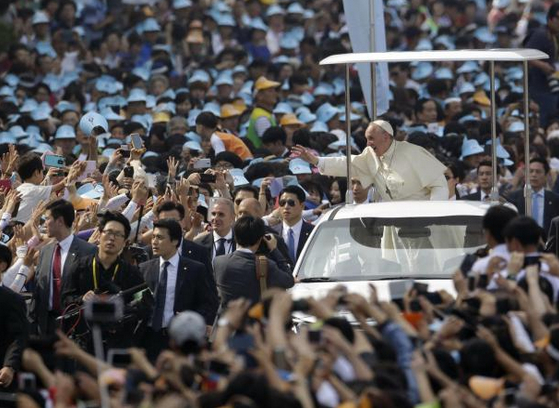![Pope Francis is greeting by a crowd on his way to mass in Korea. [Jin-man Lee/AP]](http://www.jstudentboard.com/reporter/wp-content/uploads/2014/09/JSR_Aug30_Pope-300x218.jpg)
Although Korea’s Catholic population is quickly growing, the Catholic Church has a passive presence in Korea compared to Protestant Churches. On August 16, the New York Times reported that some Protestants felt threatened by the pope’s arrival and labeled him as a conqueror.
It is hard to believe that his visit was absent of any evangelical motives. According to the Dogmatic Constitution of the Catholic Church, the role of the church’s leaders is to “[proclaim] the Gospel to every creature, [and] to bring the light of Christ to all men.” The last pope to visit, John Paul II, is credited with inspiring many conversions.
However, according to Francis, ”Christians are not coming to Asia as conquerors.”
Maria Johnson, the department chair of the religious education at Santa Margarita Catholic High School in California, stated the importance of the visit in an interview with JSR.
“Certainly, the church going to Asia is a big deal,” Johnson said.
“A big significance,” she continued, “… is that [Pope Francis is] constantly reaching out and being inclusive with all types of people.”
In addition to meeting with parishioners, Francis met with Presbyterian, Anglican, Orthodox, and Lutheran leaders in Korea in accordance with the ecumenical movement in Catholicism, which emphasizes unity across the branches of Christianity. He also spoke with a delegation of Buddhists.
“The Pope speaks about Christianity through a Catholic lens and from a Catholic voice but is being inclusive of all Koreans,” Johnson said in her interview. “It very much connects to ecumenical outreach.”

